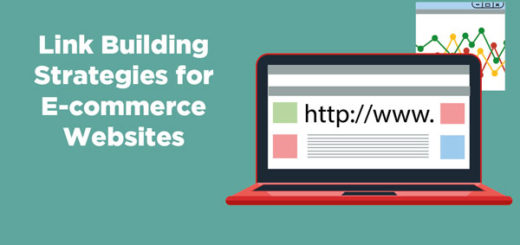7 Ways to Grow Your Email Marketing List
An email newsletter is one of the best marketing tools you have at your disposal. It allows you to engage with your customers on a regular basis; easily promote new content, products or services; and evaluate how well your messaging resonates with your target audience.
However, before you can run your email campaigns, you need to get people to sign up! There 7 surefire tactics to help grow your email marketing list and continues to grow big and strong.
1. Make it Easy to Sign Up
This seems like a no-brainer, but you’d be surprised how hard it is to find a signup link on some websites. Display yours prominently with a strong call to action, and don’t be afraid to feature it in more than one place. Some high-converting placements to consider include:
Navigation bar: People have come to expect email signup and login buttons placed at the top of your navigation bar, usually on the right-hand side. Use that space for a button urging visitors to subscribe. For example, The Center for Social Innovation in New York has their newsletter signup box in that exact location.
Feature box: Utilize an above-the-fold spot on your homepage for a strong call to action to subscribe to your email communications. Health and fitness website Greatist has a wonderful example of a strong call to action in a feature box just below their homepage banner.
Content pages: Place an email sign-up module at the end of articles and blog posts. If visitors like your content enough to read to the end, they’ll be likely to subscribe as well. New York news blog Gothamist offers locals the opportunity to sign up for their food newsletter at the bottom of all their food-related content.
Overlay: AddThis Audience Targeting allows you to display a sign-up overlay based on specific user behaviors, such as when a user visits your site for the first time, has browsed a certain number of pages, or displays exit intent. Companies like Xerox have been able to grow their email subscribers by 540% by using an overlay.
Popular email marketing services, such as MailChimp, Aweber, and Campaign Monitor, offer easy-to-implement subscribe forms that can be placed throughout your website.
2. Create Content People Want More Of
If a visitor to your website likes what they see when they arrive, they’ll be more likely to sign up for your newsletter. Since a piece of content shared on social media might be their entry point, you have to make sure that content is compelling enough to prompt them to subscribe.
Valuable content is informative, entertaining, relatable, or some combination of all three. Lists and tips are highly scannable and shareable. A catchy headline and strong visuals like large images, video content or infographics will help to draw users in.
Make sure to prominently display email sign-up buttons or forms on your content pages. Some good placements are at the end of the article or post, or through an overlay that fires once a visitor has completed reading that piece of content.
3. Raise Your Online Profile
Your brand is you, and you’re an expert in your field. Seek out opportunities to increase your visibility online by writing about and discussing topics related to your industry. Some ways to get started include:
- Become a guest blogger or contributor. Sites like the Huffington Post employ a great number of guest bloggers and contributors covering a large variety of topics. Make a list of sites that get a lot of traffic—you can use Alexa to browse top sites in every category—and pitch a few story ideas to each.
- Syndicate your content. If you’re creating valuable blog posts or articles, offer them to sites where they would be a good fit. Anyone can publish content to Medium, and you can also syndicate business-related blog posts on LinkedIn. A paid service like Outbrain makes it easy to get links to your content in front of large audiences.
- Be a guest on podcasts and video series. If you have some favorite podcasts, or you are a fan of a particular YouTuber, consider pitching yourself as an expert in your field. Offer up some fun topics for discussion, and share how your participation will benefit their audience.
Raising your digital profile will drive targeted traffic to your site, and those who are already interested in you and your area of expertise will be more likely to subscribe than someone simply coming in through a Google search.
4. Offer Something in Return for a Sign Up
New visitors generally need an incentive to leave an email address, but returning visitors to your site are 10 times more likely to leave an email address. That said, to grab those new visitors, offer a freebie such as a discount or an insiders’ guide to encourage people to subscribe.
Offering gated content—content you can only access after signing up—is a common strategy among marketers looking to generate qualified leads. A recent report on B2B lead generation showed that 80% of B2B content marketing assets are gated. Just remember, it’s key that you clearly communicate what you’re offering.
For the reward to work, it has to provide value and it has to deliver on what you’re promising. Death to the Stock Photo does an amazing job at this. When you sign up they promise to deliver a free pack of stock photos once a month. A week after receiving your first pack they send you a bonus download, just because. This keeps users engaged and turns them into loyal customers quickly.
5. Promote Your Email Newsletter on Social Media
Most email marketing services like MailChimp offer Facebook integrations. The way they work is this: you create a form within the mail client, sync it up to Facebook, and it will create a tab on your Facebook page. People who like your page can subscribe on the spot, without having to visit your website.
Another way to promote your newsletter on social media is to share the most recent edition. Giving users a way to see what they’ll be getting when they sign up is a great way to get them on board as subscribers.
6. Be Transparent and Set Clear Expectations
When you’re asking your target audience to subscribe to your email list, make sure you tell them what they’ll be getting and how often. The risks of not setting expectations correctly are a high unsubscribe rate or being reported as spam. Remember, your brand is on the line.
7. Test and Optimize
When it comes to email marketing, testing is key. It’s the only way to learn what works and what doesn’t. You can test copy, distribution channels, the placement of different sign-up links and widgets on your website, and the type of giveaways and gated content you offer.
Don’t be shy about asking your users or readers for feedback. When we want to make improvements to our home page, we ask users for their opinions on the copy, layout, and design and we incorporate that feedback into extensive testing and tweaking. Most newsletter services offer analytics, which will make it easy to find out how your readers are responding to your A/B tests. Then, you can refine and optimize your strategy based on your learnings.
It’s easy to market to those who already know and like your brand, which is why email marketing is such a powerful tool. It gives you an opportunity to engage with your customers on a regular basis; and helps them stay “in the know” —a feeling they’ll reward you for by coming back to your site again and again.
Via AddThis








